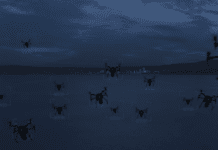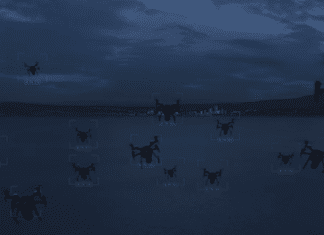This post is also available in:
 עברית (Hebrew)
עברית (Hebrew)
Drones can be useful in different applications, such as delivering and transporting goods, monitoring in different environments, or accessing places that are difficult to reach in emergency situations, for example. However, safely managing drone traffic in cities and other areas with high levels of congestion will be a major challenge.
The European LABYRINTH project was designed to create and validate new swarm drone applications to enhance safety, security, and efficiency in the civil system transport, through the research and development of drone swarming 4D (3 spatial dimensions + time) path-planning algorithms – for implementation in Ground Control Stations. New European U-space services (drone swarm deconfliction and flight planning) supporting drone swarms auto-guidance will also be researched.
It is aimed at integrating a certain degree of automation so that an operator can control a small fleet of up to 10 drones from a single ground station. In addition to planning and controlling routes, two other areas of technology are being subject to work: communication using 5G networks (so that drones are connected at all times) and the computer security behind the entire system.
The project is part of U-Space, a new European drone air traffic management system led by the SESAR (Single European Sky ATM Research) initiative. This new framework is designed to integrate low-level drone operations, below 120 meters (400 feet), safely and efficiently into European airspace.
The applications within the project framework concern different environments in Spain. For example, work is being undertaken with the Directorate-General for Traffic (DGT, in its Spanish acronym) to use drones to improve road transport, analyzing aspects such as speed control, measuring the distance between vehicles, identifying license plates, and following up on and providing support in the event of accidents. Another initiative with the National Institute of Aerospace Technology (INTA, in its Spanish acronym) is intending to use drones at airports to control unauthorized access, inspect tracks, or use them as a deterrent against birds, according to eurekalert.org.

























